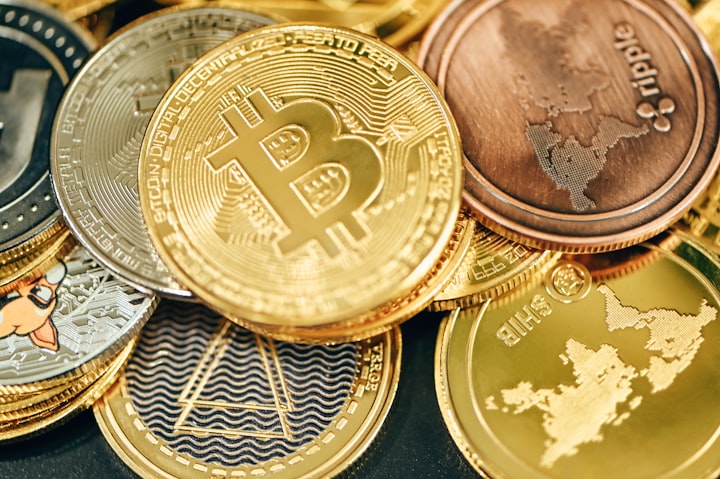XRP is a digital asset that was created by Ripple Labs in 2012. It is designed to facilitate fast and inexpensive cross-border payments, with a focus on the financial industry. XRP is often compared to other cryptocurrencies like Bitcoin and Ethereum, but it has distinct characteristics and use cases that set it apart.
In this review, we will explore the history, technology, and future of XRP, and analyze its potential as an investment opportunity.
History of XRP
Ripple Labs was founded in 2012 by Chris Larsen and Jed McCaleb. The company's goal was to create a decentralized payment system that could compete with traditional financial institutions. XRP was created as the native digital asset of the Ripple network, and it is used to facilitate transactions and pay transaction fees.
Initially, XRP was not widely known or used. It was primarily used by financial institutions that were part of the Ripple network. However, in 2017, XRP experienced a significant increase in price and popularity, along with other cryptocurrencies. At its peak in January 2018, XRP's market capitalization reached over $130 billion.
Technology of XRP
XRP is based on a distributed ledger technology called the XRP Ledger. The XRP Ledger is a decentralized, open-source blockchain that allows for fast and secure transactions. It is unique in that it does not require mining, unlike other cryptocurrencies like Bitcoin and Ethereum.
The XRP Ledger uses a consensus mechanism called the Ripple Protocol Consensus Algorithm (RPCA). This algorithm allows for fast and efficient transaction processing, with a capacity of up to 1,500 transactions per second.
One of the key features of XRP is its low transaction fees. XRP transactions typically cost only a fraction of a cent, making it an attractive option for cross-border payments and micropayments.
Use Cases of XRP
XRP is primarily used for cross-border payments and remittances. Financial institutions can use XRP to facilitate transactions between different currencies, without the need for intermediaries like banks. This can result in faster, cheaper, and more efficient transactions.
In addition to cross-border payments, XRP has other potential use cases. For example, it can be used for micropayments, such as paying for online content or services. It can also be used as a bridge currency for exchanging other cryptocurrencies or fiat currencies.
Investing in XRP
As with any investment, it is important to conduct thorough research and understand the risks before investing in XRP. While XRP has potential as a digital asset and a payment solution, it also has risks and challenges.
One of the main risks of investing in XRP is regulatory uncertainty. The status of XRP as a security or a commodity is still unclear, and there is a risk that it could be subject to regulatory action in the future.
Another risk is market volatility. Like other cryptocurrencies, XRP's price is subject to fluctuations based on market demand and speculation. It is important to approach XRP as a long-term investment, rather than a get-rich-quick scheme.
Conclusion
XRP is a digital asset with unique characteristics and potential use cases. It is designed to facilitate fast and inexpensive cross-border payments, and it has the potential to disrupt traditional financial institutions.
However, there are also risks and challenges associated with XRP, including regulatory uncertainty and market volatility. As with any investment, it is important to conduct thorough research and approach XRP as a long-term investment.
Overall, XRP is an intriguing digital asset with potential for growth and innovation in the financial industry. Its technology and use cases make it a compelling option for those interested in cryptocurrencies, but it is important to approach it with caution and be aware of the risks involved.
Recent Developments
In December 2020, the U.S. Securities and Exchange Commission (SEC) filed a lawsuit against Ripple Labs, alleging that XRP was an unregistered security and that the company had raised over $1.3 billion through the sale of XRP. This caused a significant drop in the price of XRP, and many exchanges delisted the asset.
The lawsuit is still ongoing, and the outcome could have significant implications for the future of XRP and the broader cryptocurrency industry. If XRP is found to be a security, it could face additional regulatory scrutiny and restrictions.
However, despite the lawsuit and the challenges it has posed, Ripple Labs and XRP have continued to make progress in the financial industry. In February 2021, Ripple announced a partnership with Bank of America, one of the largest banks in the United States. The partnership will focus on cross-border payments and improving the efficiency of international transactions.
In addition, XRP has continued to be used by financial institutions and payment providers around the world. For example, MoneyGram, a global money transfer company, has been using XRP to facilitate cross-border payments since 2019.
Future of XRP
The future of XRP is uncertain, but it has the potential to play an important role in the future of cross-border payments and the financial industry.
If XRP is able to overcome the regulatory challenges it currently faces, it could see increased adoption and use by financial institutions and payment providers. This could lead to increased demand and a higher price for XRP.
In addition, Ripple Labs has continued to innovate and develop new products and services that could further expand the use cases for XRP. For example, RippleNet, Ripple's global payment network, allows for fast and secure cross-border payments using XRP.
However, there are also challenges that XRP will need to overcome in order to achieve its full potential. These include regulatory uncertainty, competition from other cryptocurrencies and payment solutions, and the need to continue to innovate and develop new use cases for XRP.
Conclusion
XRP is a digital asset with unique characteristics and potential use cases, particularly in the area of cross-border payments and remittances. It is based on a decentralized blockchain technology that allows for fast and secure transactions, and it has low transaction fees.
However, XRP also faces regulatory challenges and market volatility, which can make it a risky investment. It is important to conduct thorough research and understand the risks before investing in XRP.
Despite these challenges, XRP and Ripple Labs have continued to make progress in the financial industry, with partnerships and collaborations with major banks and payment providers. The future of XRP is uncertain, but it has the potential to play an important role in the future of cross-border payments and the broader financial industry.
About the Creator
Aron38
short story lover







Comments
There are no comments for this story
Be the first to respond and start the conversation.